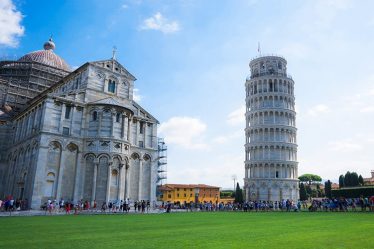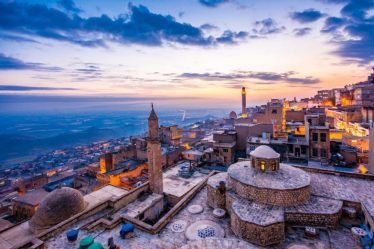Albania is an interesting country that carries traces of Italy and the Ottoman Empire, blended with the Balkan culture with its unique culture. The reason why it is so close to the European geography and preserves its unique texture is that it has been one of the iron curtain countries for years. Enver Hoxha, the communist leader who ruled Albania with oppression for more than 40 years, had been isolated from the world for a long time.
Due to its location, Albania, which has resisted attacks on the Adriatic coast for centuries, is called the key country of the Balkans. The name derives from the Latin word ‘alba’ meaning ‘standing on high’ and the westerners call ‘Albania’, Albania’s territory is mostly mountainous.

ⓘ Content List
Albania Travel Guide
Albania Attractions
- Tirana
- Elbasan
- Berat
- Durres
- Kruja
- Shkodër
- Ksmail
How to get to Albania
When to go to Albania
Albania Travel Guide
Albania, located in Southeast Europe, bordering the Adriatic Sea, between Greece and Montenegro in the south, Macedonia in the east and Kosovo in the north, is the world’s 144th largest country with a surface area of 28,748 km2.
The country has a coastline on the Adriatic Sea to the west and the Ionian Sea to the southwest. 1 hour behind Turkey. 70% of the population is Muslim, 20% Orthodox and 10% Catholic. The official currency of Albania is Lek.
The origins of the Albanians, the oldest society in the Balkans along with the Greeks, date back to BC. It dates back to the 600’s. Albanians are a descendant of the Ilirs who lived in the region formed by the Adriatic and Ionian Seas in the west, the Danube and Sava Rivers in the north, Morava and Vardar in the east, and the Pindi Mountains in the south.

With the arrival of the Ottomans in this region in the 14th century, Albanians, who remained under Turkish rule until 28 November 1912, had an important role in the emergence of the Ottoman Empire’s power as a world empire and in the effective spread of this power. Many soldiers, ulema, bureaucrats and high-ranking statesmen who grew up among the Albanians took their place in the top cadres in the Ottoman Empire and strengthened the empire.
During the First World War, it was occupied by Italy , Serbia , Montenegro, Greece, France and Austria-Hungary. In January 1925, the Republic of Albania was proclaimed and a parliament was formed.
Albania, which was occupied by Italy on April 7, 1939, was ruled until 1944 depending on this country. When the independent People’s Republic was established under Enver Hoxha on 29 November 1944, this communist regime remained in power until 29 April 1991. In 1991, the country’s first multi-party election was held.
Albania Attractions
I went with a group of friends to Thessaloniki, Bitola , Ohrid , Mavrovo and Skopje by bus that set off from Istanbul. Then the friends returned and I returned to the city of Ohrid, which I loved so much. I walked through the Macedonian-Albanian border gate and started touring Albania .
1. Tirana

The capital, Tirana, is a small city. Along Vatan Şehitleri Caddesi, which is its most important street, there are the Parliament and the Prime Ministry Building and the University of Tirana. Ethem Bey Mosque , Clock Tower and Skender Bey Statue , which are located in the square in the heart of the city and have become the symbol of Albania, are among the top places to see.
Ethem Bey Mosque, built by Hacı Ethem Bey in 1793, is famous for its wall paintings. Like many Balkan cities, a river runs through Tirana. Remains of the old Ottoman Castle can be seen near the Lena River, which adds a special beauty to Tirana.
3. Elbasan

With its round tiled houses, Elbasan looks like an Anatolian town that has partially preserved its Ottoman state. The city is the country’s third most populous and third most important city after Tirana and Durres.
Elbasan, whose identity became more evident during Mehmet the Conqueror’s campaign in 1466, became one of the centers of Islam in Albania as the sanjak of the Ottoman Empire after the police station was built.
Just like Tirana, it is culturally colorful, with many churches being built as well as Islamic buildings. Elbasan Castle , built by the Ottomans, and the King Mosque, built in 1492, are among the rare artifacts that can survive in Albania.
In Elbasan, the city where the Ottomans set foot in the province of Albania, the symbol of the city is the Clock Tower , which is an Ottoman structure and dates back to the 16th century and still preserves its originality .
3. Berat

Berat is a city that I love very much and would like to see again. Berat, where the Ottoman Empire ruled for five centuries,twin sister of Safranbolu with its historical houses. Berat is again a city dominated by the Ottoman texture.
The Osumi River, which welcomes you at the entrance of the city and has a magnificent view, divides the historical city in two. Gorica Bridge , which stretches like a pearl necklace over the river with a Muslim quarter on one side and a Christian quarter on the other, was built by Ahmet Kurt Pasha in the 18th century.
The most important of the mosques that can withstand the time and the practices of the communist era are the Kurşunlu Mosque, Hünkar Mosque, Saat Mosque and Bekarlar Mosque, which are dated between 1530 and 1540, and the Ottoman works that have survived to the present day. Get lost among the houses lined up at the foot of Berat Castle and enjoy the view from the top of the castle. On your way down from the castle, stop by the National Ethnographic Museum, where traditional life in an old mansion is showcased.
4. Durres

Durres or Durrësi, also known as Durres , is the second largest city in Albania after Tirana. Located on the Central Adriatic coast 33 kilometers west of Tirana, the city is a historically and economically important settlement.
The city I went to by minibus departing from Tirana was stagnant and colorless due to the winter season. The Italian cities of Bari and Brindisi are located on the opposite shore of Durres, which is located in a relatively narrow area of the Adriatic Sea, which is populated by vacationers in the summer months.
The most important historical structure of the city, where Albania’s main port is located, is the Fatih Mosque, which dates back to the Ottoman period. There is a historical Orthodox Church and a historical tower from the Old Castle on the shore. Other places to visit and see in Durres include the Ancient Theatre, Skanderbeg Statue and the square where the statue is located. From Durres I took a minibus to Kruja.
4. Kruja

Situated on a hill overlooking the fertile Fushë Krujë plain on the western slopes of the Kruja Mountains, Kruja is the city where Ottoman heritage is widely found. Krujë Castle, also known as Akçahisar Castle and at an altitude of 600 meters, is the highest point of the region.
The Iskender Bey Museum located in the castle can be seen. The bazaar, which extends at the entrance of the castle, gives off an Anatolian atmosphere. The old Ottoman Bazaar is ideal for shopping. Murad Bey Mosque, which carries traces of the Ottoman Empire, is an Ottoman heirloom built in 1534. Kruja is also an important geography as a Bektashi sect center centered around the cult of Sari Saltuk Dede.
The Kruja Bektashi Lodge is worth seeing , on the way to the Kruja Castle by minibuses departing from the center of Kruja. Durres and Kruja can be visited together with a one-day program.
5. Shkodër

Shkodër is the historical center of Albania, with the 3,000-year-old Rozafa Fortress. Rozafa Castle is one of the places to visit in the city. Surrounded by the Bojana and Drin Rivers, this is also where the city’s landscape looks best.
Known as the most famous and largest castle in Albania, there is a cemetery, bell tower, Ottoman, Venetian and medieval structures in the castle. Apart from the castle in Shkodra, the History Museum, Turkish Baths, old Ottoman houses in narrow streets, Ottoman Prison, Dilaver Pasha House, 14th century St. Stephen’s Cathedral, the 19th century Shkodër Cathedral and Fatih Sultan Mehmet Mosque, which was converted from a church, can be seen.
See Kurşunlu Mosque, built by Arnavut Mehmet Bushati Pasha in 1773. Kolë Idromeno, the pedestrian street in the center of the city with many cafes, bars and restaurants, is also the most popular place in the city.
6. Ksmail
Those who want to add new places to their holiday routes should take note of Ksamil . The resort, which was established in 1966 on the riviera in the south of Albania, is also part of the Butrint National Park. Located in the south of the city of Saranda, Ksamil has become a favorite holiday destination for foreign tourists.
It was chosen as one of the 20 best cheap beaches to vacation in 2013 by the Guardian newspaper. Must-do items include dining at the seafood restaurants that are fresh on the nearby Ksamil islands. The islands are easily reached by boat. The beach of the mainland is small but clean.

How to get to Albania
If you prefer to go to Albania by plane, it is possible to reach Tirana Rinas Airport with direct flights between Istanbul and Tirana in approximately 1 hour and 45 minutes. You can reach the center from the airport in 15 minutes.
Bus services are also organized to Tirana and other Albanian cities, where transportation is also possible by road. The distance between Tirana and Istanbul is 1010 kilometers and takes 20 hours by bus.
When to go to Albania
The air temperature in the capital Tirana is 17-31 degrees in August, the hottest month, and 2-12 degrees in January, the coldest month. The weather conditions of the country, which is dominated by the Mediterranean climate, which is generally hot and dry in summers and warm and rainy in winters, harden towards mountainous areas.
Three types of climates are seen in the Albanian coastal belt: Mediterranean climate, humid climate in the north and inland, and Alpine climate in the northeastern regions. Therefore, spring is the best time to visit Albania.
In my opinion, almost every country can be visited for 4 seasons. I traveled the Balkans for 1 month in winter and it was very enjoyable. I recommend it to you too.

